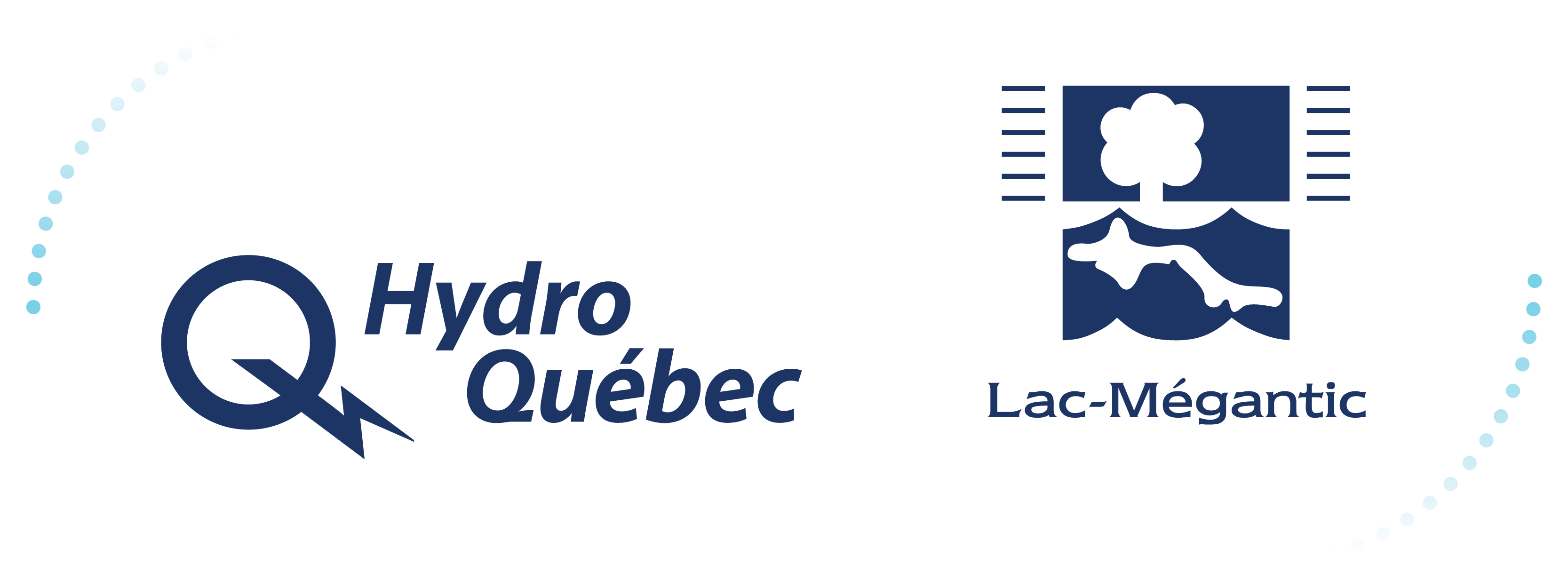How does a microgrid work?
Microgrid diagram and description
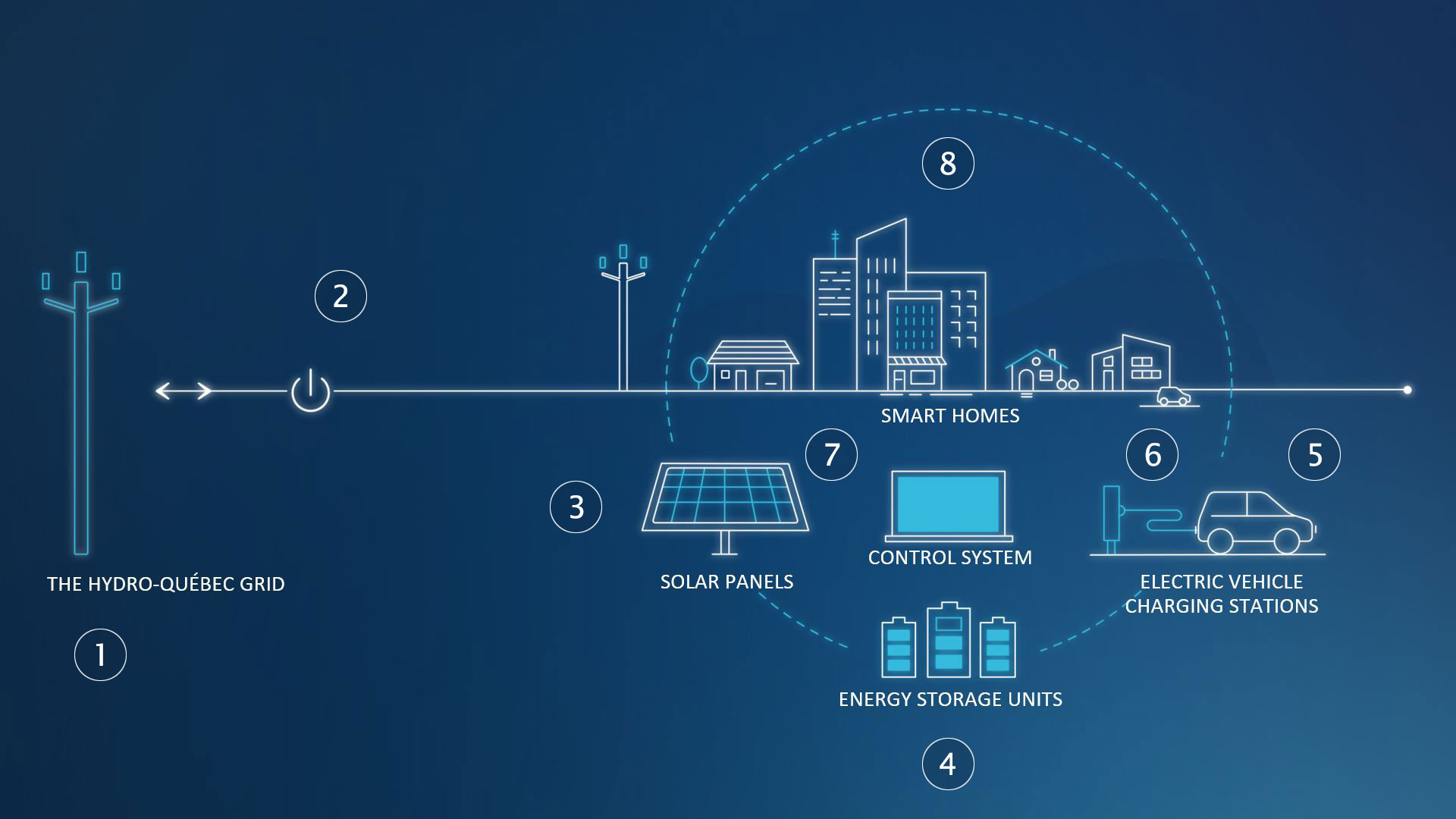
- 1Hydro-Québec’s distribution system supplies electricity to the Québec market. With over 225,000 km of lines, the system delivers power that’s more than 99% clean and renewable to 4.4 million customers.
- 2The breaker is a device that disconnects the microgrid from the main grid. When it is open, the connection is disrupted and the microgrid operates autonomously.
- 3Solar panels capture the sun’s rays and convert them into electrical energy. The sun is a source of intermittent renewable energy.
- 4The energy storage system stores electricity, including the electricity produced by solar panels, in batteries. Combining an intermittent renewable like solar power with a storage system makes it possible to meet energy needs for a certain period when demand exceeds supply.
- 5Electric vehicles (EVs) are powered by electric batteries. Unlike vehicles that run on gas, vehicles that are 100% electric emit zero GHGs.
- 6Charging stations recharge electric vehicle batteries. The Electric Circuit, Quebec’s largest EV public charging network, has both quick-charge (400 V) and standard (240 V) stations.
- 7Smart buildings are designed to optimize resource use and improve energy efficiency without compromising on comfort.
- 8The control system monitors and manages all the components of the microgrid. It provides data on the electricity generated by the solar panels and the battery charge level as well as forecasting future supply and demand. It also oversees the connections between generation, storage and end user, based on mode of operation and certain pre-set rules.
Solar power
Facilities
Rooftop, Centre sportif Mégantic
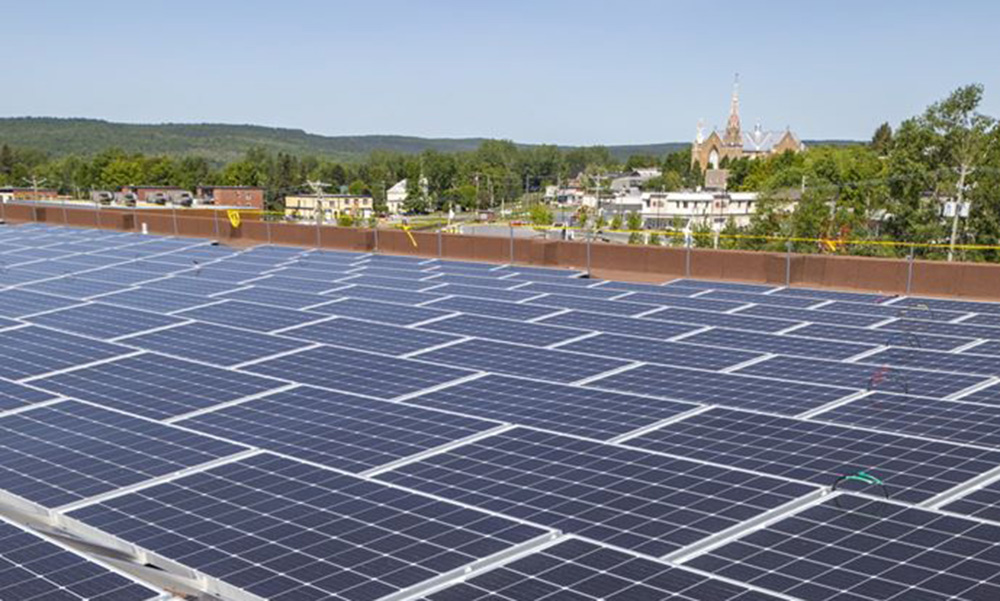
The roof of the sports complex is covered with 1,700 solar panels totalling 620 kW of installed capacity — over 75% of the electricity produced by the microgrid.
These panels supply the microgrid when it operates in islanded mode (i.e., when the connection with the Hydro‑Québec grid is interrupted). Surplus power is stored in batteries at the microgrid substation or fed back into the main grid when in connected mode (i.e., once the connection has been restored).
Microgrid pavilion
The multipurpose solar-powered covered structure in the railway station park is a technology showcase for the microgrid project in the heart of the downtown district. The structure’s 72 solar panels power the nearby heritage railway station and lower its electricity bill. In addition to demonstrating how new technologies can be harmoniously integrated into the urban landscape, the project partners aim to make them easier to access and understand for everyone. The pavilion is at the core of the microgrid discovery tour.
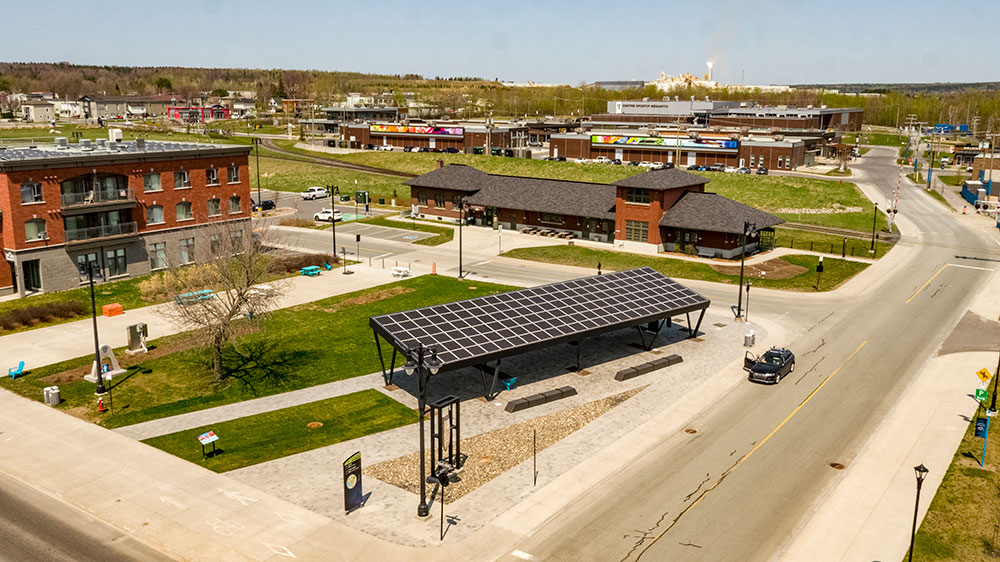
A model for integrating technology with the environment.
A public gathering place sheltered from the weather that offers many possible uses, including:
- Cultural, recreational, sports and community activities
- Pole of the micro-network interpretation circuit
- Place to raise awareness about renewable energy
New fire station for Lac‑Mégantic
This fire station–the only one of its kind in Québec–features 144 two‑sided solar panels to generate electricity. It also has storage batteries (20.4 kW and 44.8 kWh) and an energy management and control system.
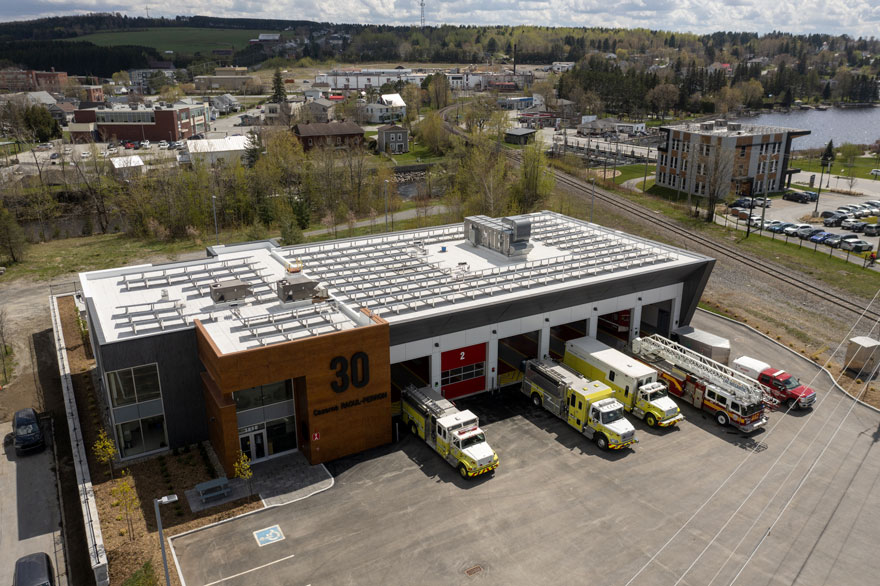
The connection with the microgrid will make it possible to carry out exchanges between the equipment installed at the fire station and the microgrid’s centralized control system in order to:
- optimize the use of all the microgrid’s resources during islanding.
- contribute to two-way energy exchanges between the microgrid and the main grid.
- contribute to the management of power demand during winter peaks.
The fire station is also a model of energy efficiency thanks to its energy-efficient thermal envelope and technologies that reduce electricity use, such as the heat recovery system used for the building’s heating.
Solar power generation and energy consumption
Evolution of photovoltaic solar power and energy consumption (loads) on a annual basis
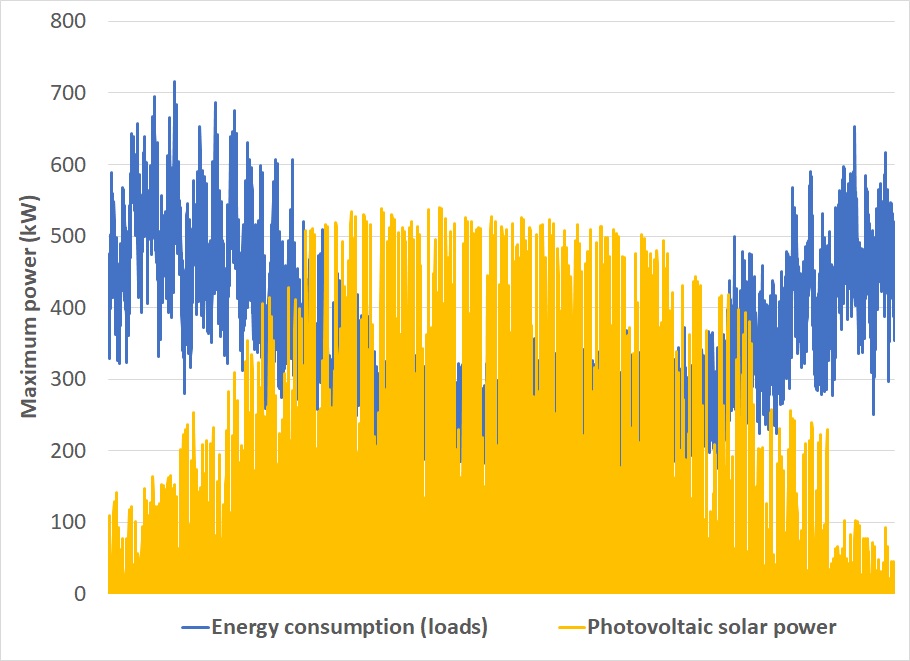
In winter (side sections of the graph), given the reduced number of hours of sunlight and the higher demand due to heating, solar energy will only partially power the microgrid buildings.
In summer (central part of the graph), the solar energy produced will be sufficient to meet the demand from all the buildings served by the microgrid.
Should supply exceed demand, the surplus will be stored in batteries and used during cloudy periods or after sundown. The microgrid’s two-way energy exchange feature means surplus power could also be injected into Hydro-Québec’s main grid.
Autonomy
The microgrid’s autonomy in islanded mode will vary based on season, weather conditions and time of day. On average, more hours of autonomy are to be expected in summer and fewer in winter.
Microgrid’s autonomy in islanded mode based on the month of the year
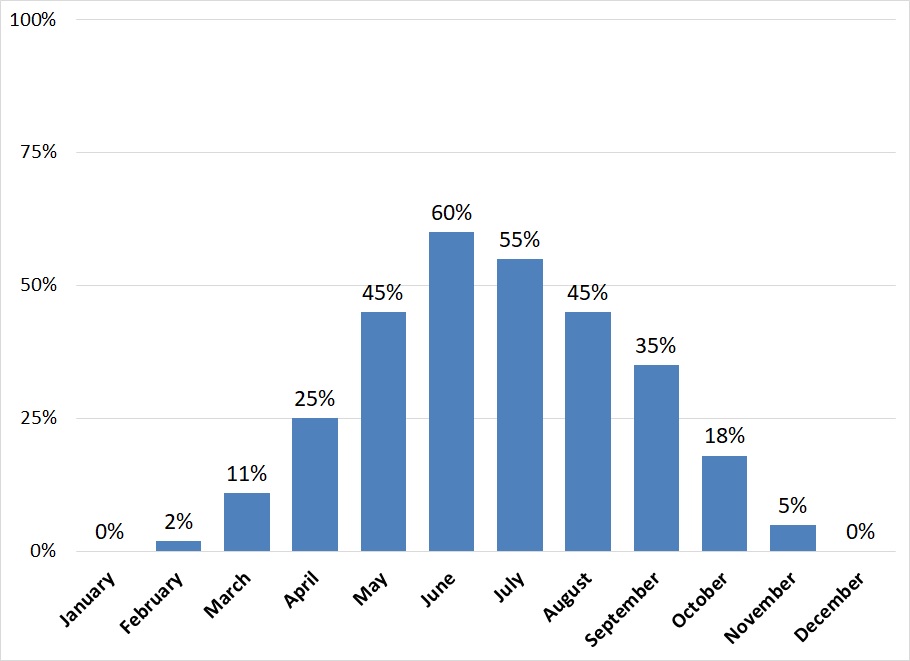
Energy storage
The energy storage system optimizes the microgrid’s energy ecosystem by providing the required power at the right time.
Some possible applications:
- Additional power supplied during peak periods
- Storage for intermittent renewables like solar power
- Continuous electricity service when the main grid goes down
Energy management
Smart devices
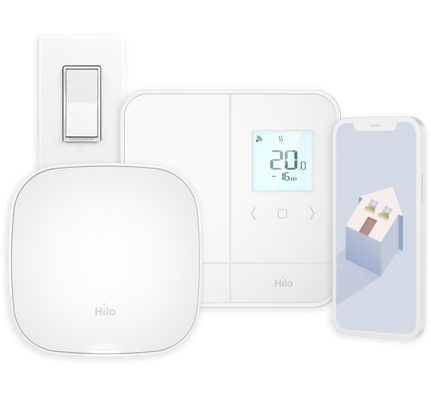
Thermostats, light bulbs and other smart devices have been installed in co-properties to help their occupants more effectively manage energy use.
Optimizing energy use through new technologies and changing habits are part of an energy-saving mindset that anyone can adopt.
Electric vehicle charging stations
A two-vehicle EV charging station has been installed near the heritage railway station to promote the progressive phasing out of fossil fuels in favor of renewables.
Energy efficiency measures
Upgrades and improvements to mechanical HVAC systems in commercial buildings on Promenade Papineau have improved the work environment and overall comfort, while energy management adapted to actual usage will result in energy savings.
Control system
The control system manages the microgrid’s every component.
Microgrid substation
Below, an overview of the components of a microgrid substation.
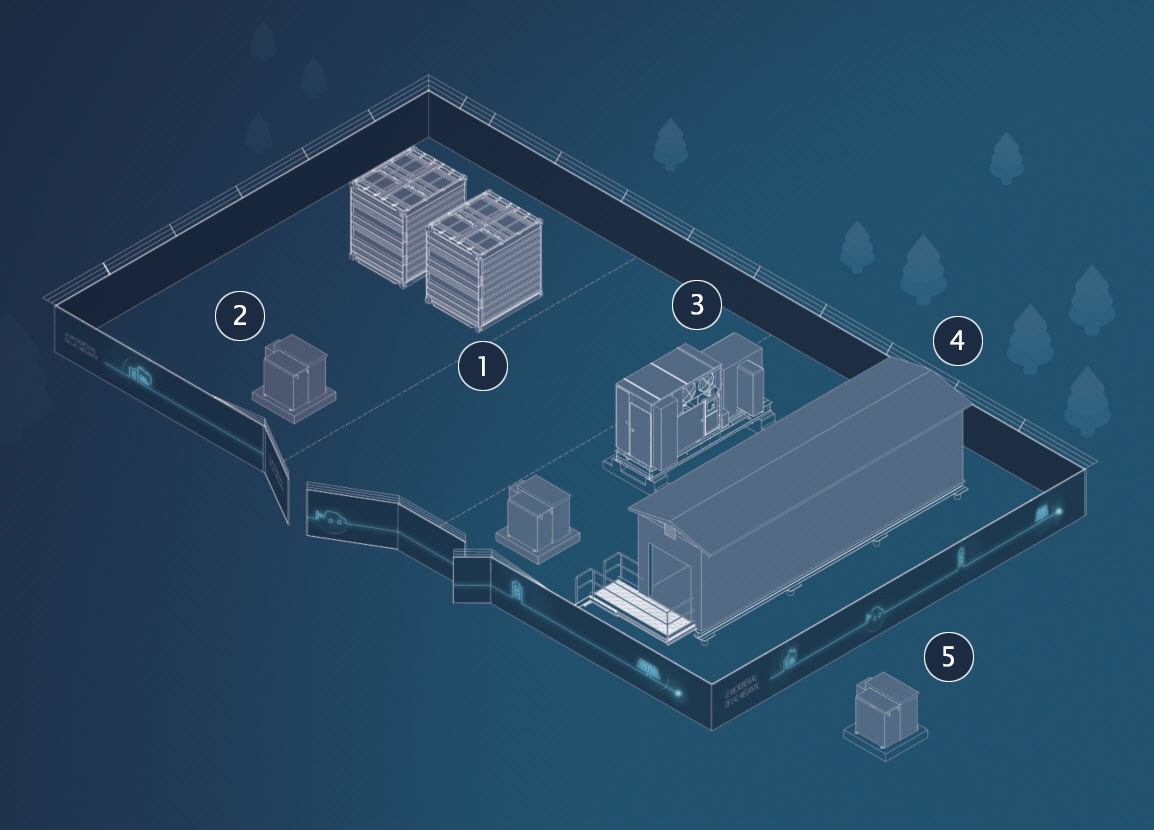
- 1Containerized energy storage system
- A total of 600 kWh of power in two containers
- EVLO lithium-ion batteries (LFP technology developed by Hydro-Québec researchers)
- 2Transformers (500-kVA and
1500-kVA)
Voltage adjustments:
- Raising the output voltage of the solar panels (sports complex roof) to 600 V
- Lowering the output voltage of the temporary generator (located in front of the station during the test period) to 600 V
- 3A 750-kVA converter
(rectifier/inverter)
Current transformer:
- Transformation of alternating current into direct current (rectifier) to store energy in the batteries
- Transformation of direct current into alternating current (inverter) to inject power from the batteries into the main grid
- 4Control building
- Control systems
- Electricity distribution panels
- Telecommunications
- 52,500-kVA transformer
Voltage adjustments:
- Raising substation output voltage to 25,000 V
- Lowering distribution system voltage to 600 V
Examples of use
Watch these short videos to learn about energy flows based on different uses (in French only):
